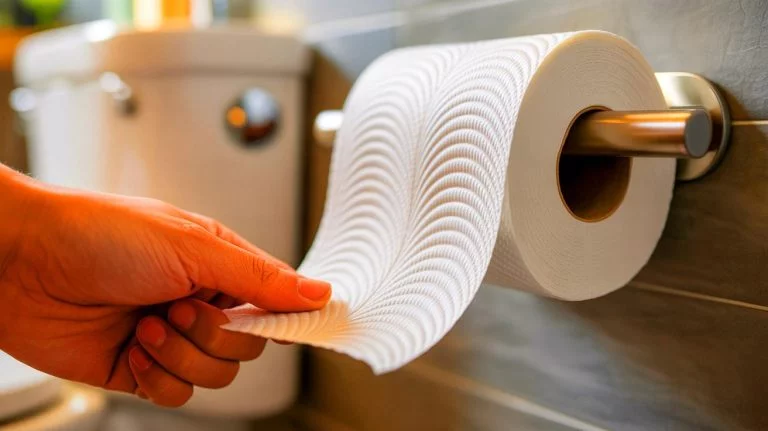| IN A NUTSHELL |
|
In the fast-paced world of technology and innovation, we often overlook the subtle advancements in everyday products that significantly impact our daily lives. One such unassuming yet transformative innovation has occurred in the realm of toilet paper. Charmin, a leading brand, has introduced a revolutionary wavy perforation design that has sparked a notable increase in sales and consumer satisfaction. This innovation demonstrates how even the smallest changes in routine products can lead to significant shifts in consumer behavior and market dynamics. As we delve into the intricacies of this product evolution, we uncover a fascinating story of engineering precision and cultural adaptation.
A Silent Revolution in Toilet Paper
For years, toilet paper has remained a staple in households, often taken for granted due to its seemingly unchanging nature. Yet, beneath this facade of simplicity lies a competitive race for innovation. Charmin’s latest breakthrough, the Smooth Tear wavy perforation, exemplifies this trend. After extensive research and development, the company introduced a subtle change that has redefined the way people experience this everyday product. This seemingly minor adjustment has led to a 5% increase in Charmin’s business, illustrating the potential of small innovations to make a big impact.
This change addresses a common yet overlooked issue: the uneven tearing of toilet paper sheets. By replacing the traditional straight perforation with a wavy line, Charmin has enhanced user satisfaction, demonstrating that even the most mundane actions can be optimized. This quiet revolution in toilet paper design highlights the potential for innovation in the most unexpected places, proving that ordinary objects can undergo extraordinary transformations.
The Engineering of Touch
The innovation in toilet paper design is far from arbitrary; it involves complex engineering processes. Procter & Gamble, along with other leading companies, has invested years in creating hundreds of prototypes to refine this essential product. Engineers and designers meticulously analyzed various parameters, including strength, texture, and moisture response, to develop the optimal design.
The wavy pattern is a result of precise calculations that account for factors such as force, angle of pull, and adaptation to industrial processes. Behind this seemingly simple product lies an intricate mechanism involving rotating cylinders, synchronized teeth, and cleverly arranged anvils—a testament to the art of engineering. This meticulous process underscores the delicate balance between form and function, highlighting the significant role of engineering in enhancing even the simplest products.
Paper, Culture, and Hygiene
The evolution of toilet paper is not just a story of technological advancement but also a reflection of cultural shifts. While paper has been around for centuries, its use as toilet paper only became widespread in the late 19th century. Prior to this, people used various materials, including leaves, cloths, and even old newspapers, to fulfill this basic need.
Joseph Gayetty’s introduction of “medicated” paper in 1857 marked the beginning of modern toilet paper, although it faced initial skepticism. The true turning point came in 1890 with the advent of perforated rolls, which brought convenience and hygiene to the forefront of daily routines. The ongoing quest for balance between functionality, hygiene, and sensory experience has elevated toilet paper to a level of applied design, reflecting broader cultural attitudes toward hygiene and comfort.
Subtle Innovation
In the eyes of experts like Barry Kudrowitz, Charmin’s wavy edge represents “incremental innovation”—small refinements that optimize product use without altering its essence. Unlike more disruptive solutions, such as the bidet, the wavy toilet paper integrates seamlessly into existing habits, drawing strength from its familiarity.
This change requires no relearning but offers tangible benefits, making it a remarkably effective advancement. In a market saturated with competing brands, convincing consumers that a brand is slightly better, softer, or smarter is a significant achievement. Charmin’s new wavy edge symbolizes the modern obsession with technical perfection in everyday life, emphasizing the importance of refining the ordinary and reminding us that even the most banal gesture can result from years of engineering and design.
The story of Charmin’s wavy edge exemplifies the modern pursuit of technical perfection in our daily lives. It’s about elevating everyday objects to receive scientific, commercial, and cultural attention. This art of revealing complexity in simplicity applies high-precision technology to an object destined to disappear as soon as it’s used. As we marvel at these silent advancements, we are left to ponder: what other overlooked aspects of our lives might be waiting for their own quiet revolutions?
Did you like it? 4.5/5 (28)








Wow, who knew toilet paper could be so fascinating? Thanks for the insight! 🧻
Is this really going to revolutionize how we use toilet paper, or is it just marketing hype?
Finally, a solution to uneven tearing! My mornings just got a whole lot better. 😂
I’m skeptical—how much can a wavy line really change my life?
Bravo, Charmin! Your engineers deserve a round of applause. 👏
Does this mean we have to pay more for toilet paper now? 😒
Thank you for sharing the history of toilet paper. It’s more interesting than I thought!
Anyone else think this is just a gimmick to sell more toilet paper?
They hypnotize you , with the wavy lines , as your mind gets lost in the cracks of the beautiful flow of the curves….Will it hug your. Ackside , as it appears to have more traction ?
I appreciate the focus on hygiene, but let’s not overcomplicate things!
Who knew that a perforation pattern could involve so much engineering? Mind blown! 🤯
Is the new design more eco-friendly, or is it just about comfort?
This is the kind of innovation I can get behind—practical and simple.
Charmin’s onto something—small changes can have a big impact.
How long before other brands start copying this design?
Thank you, Charmin, for making my life just a bit easier! 😊
Why did it take so long to come up with this wavy perforation idea?
This is the kind of news we need in these trying times. 😂
Can someone explain how this affects the toilet paper’s strength?
I’m all for incremental innovation. Keep it coming, Charmin!
Will this change be rolled out globally, or is it just in certain markets?
The engineering behind this is impressive, but is it worth the cost?
Love this! What other everyday products could use such innovation?
My grandma always said, “Don’t fix what ain’t broken,” but this seems legit. 🤔
Does this new design help save paper, or is it just about user experience?
I don’t see how this will “change how I poop forever”—a bit dramatic, no? 😆
It’s about time someone thought of this! Kudos to the team. 🎉
This is cool and all, but I’m more interested in cost savings than comfort.
Hope this isn’t just a marketing ploy. Let’s see if the hype is real.
Interesting read, but I think I’ll stick to my usual brand for now.
Is this the start of a toilet paper innovation race? Bring it on!
I’m curious, does this design affect the roll’s overall length?
Great article! I learned something new today about toilet paper design. 💡
Sounds great, but I hope they keep the price reasonable for us everyday users.
Thanks for the heads up—I’ll be on the lookout for this in stores.
Not sure how I feel about this. I guess I’ll have to try it myself.
How does this design hold up when wet? That’s the real test!
I’ll believe it when I see it. Until then, it’s just paper to me. 😉